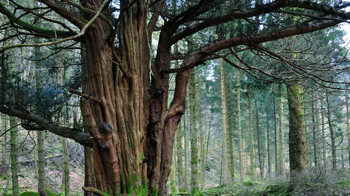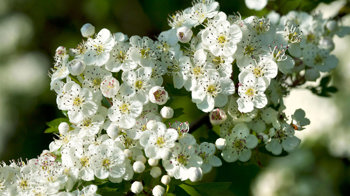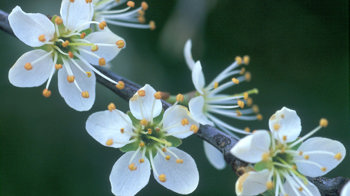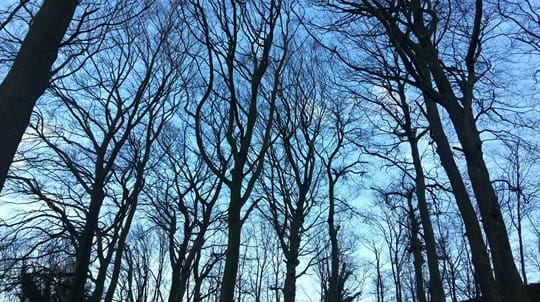
Barber Wood
Coberley

Woodland Trust wood
39.04 ha (96.47 acres)
SO950158
Explorer 179
OS Landranger 163
Lying just south of Cheltenham, Barber Wood is a mixture of young mixed broadleaf plantation and open limestone grassland.
This tranquil site was purchased in association with The Countryside Commission and named after their former chairman, Lord Barber of Tewkesbury.
Features
- Parking at site
- Public access
- Grassland
- Broadleaved woodland
How to get to Barber Wood
Barber Wood straddles a large hill about 9.7km (6 miles) to the east of Gloucester and 6.4km (4 miles) south of Cheltenham, in the Parish of Coberley, within the Cotswolds Area of Outstanding Natural Beauty.
Barber Wood is highly accessible due to its position just off the A436 and parking is suitable for eight cars.
From Gloucester take the first turning off the A436 towards Coberley, and the second turning for Coberley
if you are driving from Cheltenham via Seven Springs roundabout. You will find Barber Wood off Muddy Lane. What3Words location: ///regulates.gently.ideals.
Train stations are situated on Queens Road, Cheltenham and Bruton Way, Gloucester.
Visit National Rail for more information.
The nearest bus stop is next to the Surrey Oaks pub on Parkgate Road, which joins the southern end of Broad Lane. It is a short 500-metre walk to the southern entrance of the wood. Please take care as there are no pavements next to this busy road.
Visit Traveline for more information.
If you are an avid walker then take the Gloucestershire Way which runs past Barber Wood.
The Gloucestershire Way is a 160km (100 mile) national trail that runs from Chepstow in Monmouthshire, to Tewkesbury in the Cotswolds.
Facilities and access
The main entrance is on Muddy Lane off the A436, and via the Gloucestershire Way which passes through Barber Wood alongside a bridleway route.
Within Barber Wood there is a network of paths, mainly permissive providing circular and linear routes.
Most paths are grassy and there are a number of steep and often muddy/slippy areas running up the slopes. Entrance points are served with gates on the public right of way and are either kissing gates (no disabled access) or open paths at other entrances.
There is parking for up to 8 cars off of the A436. Please note that this is a very fast and busy A road.
The nearest public toilets are available on the A436 layby just off of the Seven Springs roundabout, and at Crickley Hill Country Park visitor centre.
Wildlife and habitats
Barber wood offers native broadleaf woodland dripping in moss and open grassland dotted with clumps of mature parkland trees and carpeted in wildflowers that attract butterflies and other pollinators.
Animals
The wildflowers of the species-rich, unimproved limestone grassland attract a great number of butterflies including the rare chalkhill blue butterfly.
Trees, plants and fungi
The unimproved limestone grassland is populated by yellow-wort, field scabious, horseshoe vetch and knapweed; pyramidal, common spotted and fragrant orchids are also present on the southern slopes. Yellow rattle and birds-foot trefoil in addition to knapweed and field scabious may also be found across the semi-improved grassland.
The main field contains several historic planted roundels with mixed broadleaf and conifer species dating back to the 1800s. Species include beech, pine and horse chestnut.
The wood itself is composed of largely even-aged blocks of mixed native broadleaved species, including ash, beech, birch, field maple, whitebeam, yew and pedunculate oak. Shrub species include hawthorn, blackthorn, dog wood, guelder rose, spindle and hazel.
Wide strips of open ground have been left between and within planted blocks, with wide rides and scallops offering successional habitat from patches of wildflower grassland, developing scrub habitat and shrub rich woodland edges.
Habitats
Barber Wood is a mixture of young largely even-aged native broadleaf woodland and grassland which consists of open improved and semi-improved grassland to the north. There are smaller important areas of unimproved limestone grassland on the lower south-facing slopes.
Several historic landscape features lie within the site, such as round clumps of mature parkland trees called roundels, dry-stone walls, earth terraces called lynchets, ancient hedgerows, and old pollards. Old hedgerows provide good connectivity across the site and the southernmost boundary supports many veteran pollards.
Ullenwood - an ancient coppice woodland managed by the Cotswold Conservation Board forms the western boundary providing connectivity to the wider wooded landscape.
About Barber Wood
The wood was planted in 1992 with some phased planting in 1996. It is named after the late Lord Derek Coates Barber of Tewkesbury who was chairman of the Countryside Commission. Lord Barber was renowned for bringing farming and conservation together. Barber Wood is a testament to this concept, having been planted on former farmland.
Things to do in Barber Wood
From the main car park there is a well-defined circular walk in the large open grassland area and some well-trodden paths in the wood that weave around the trees.

Visiting woods
Walking dogs in our woods
Dogs are welcome for walkies in our woods. Take a look at our tips and guidelines for ensuring we keep our woods safe and special for dogs and wildlife.
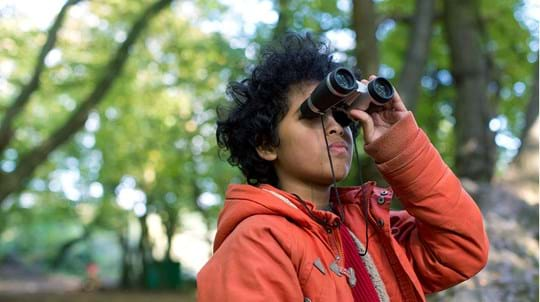
Visiting woods
Things to do in the woods
Go on an adventure. Get closer to nature. Uncover history. Discover ways to explore the UK's woods whatever the season.









